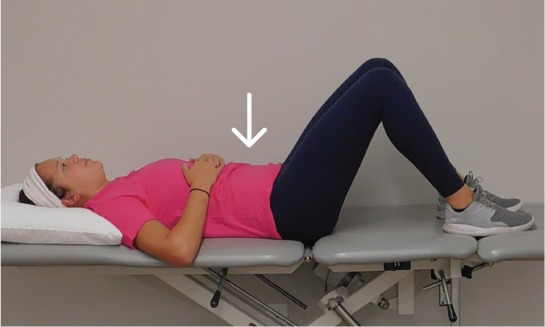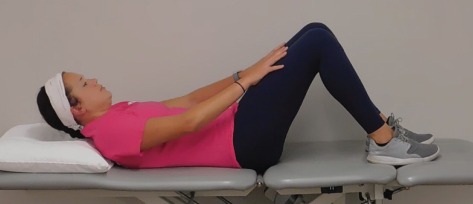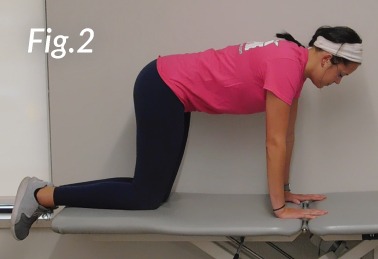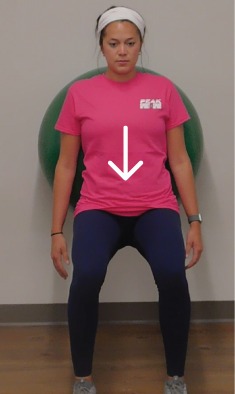Core Stabilization Program
Your Step-by-Step Guide for a smooth recovery
This program will introduce the foundations of core stabilization and is designed to help patients improve the central ‘core’ muscles of the body. Successful application of this program will help patients to minimize the risk of injury, lessen pain, and improve function. These gains will occur in improved strength, posture, and mobility. Core stability is improved by consistently performing exercises designed to increase the power of muscle movement resulting in more efficient and coordinated mobility. The physical therapist will provide instruction to ensure each patient performs the program safely and effectively. The physical therapist will progress the patient through increasingly demanding functional movements while maintaining a neutral, pain-free position of the spine. More advanced goals will be attained by improvements in balance and coordination in a program tailored to the patient’s individual goals.
The goal of instruction is for each patient to demonstrate proper technique and confidence that will allow progression to an independent home exercise program that utilizes basic core stability exercises. The following program will include strengthening activities in a variety of body positions, as well as flexibility training and aerobic conditioning. The described activities are general guidelines, and the therapist will adapt the program to each patient as needed. In addition to this program, the physical therapist will also teach proper body and lifting mechanics, transfer techniques, ergonomics, and joint protection techniques. The program is useful and beneficial before and after surgery.
Body Positioning
Strengthening
Flexibility
aerobic Conditioning
15 basic core stability exercises
Supine Exercises
1. Abdominal Bracing
- Lie on back with knees bent
- Tighten abs towards spine
- Hold for 10 sec, practice diaphragmatic breathing
10 reps per set, 1 set per session, 2 sessions per day

2. Alternating Leg Marching
- Lie on back with knees bent
- Perform abdominal bracing while lifting each leg 12 in.
- Perform slowly, alternating right and left legs
10 reps on each leg per set, 1 set per session, 2 sessions per day

3. Dead Bug
- Lie on back with knees and hips in 90-90 position (see Fig.1)
- Perform abdominal bracing while partially extending each leg
- Perform slowly, alternating right and left legs
10 reps on each leg per set, 2 sets


4. Partial Sit-Ups
- Lie on back with knees bent and hands on thighs
- Tighten abs and lift upper back off floor while sliding hands up thighs
- Hold lifted postion for 2 seconds
- Keep head neutral (maintain fist-width space between chin and chest)
- (When ready and able) perform the exercise with arms crossed over chest
10 reps on each leg per set, 2 sets


5. Single Knee Press
- Lie on back with knees bent
- Tighten abs and lift leg into 90-90 position
- Press hands against lower thigh with light pressure and keep leg still
- Hold 5 seconds

Bridging Exercises
6. Partial Bridge to Full Bridge
- Lie on back with knees bent and feet flat
- Tighten abs and lift hips and buttocks off floor 1-5 inches
- Hold for 5 seconds and return buttocks down to floor
- You may build to 10-sec. holds as tolerated
Perform 10 reps per set, 1 set per day

7. Bridge with Exercise Ball
- Lie on back with calves on ball and hands at your side
- Tighten abs and lift hips and buttocks in a pain-free motion (avoid hyperextension of spine)
- Hold for 2 seconds and then slowly return buttocks to floor
Perform 10 reps per set, 1 set per day


Prone Exercises
8. Alternating Arm & Leg Lifts
- Lie on stomach with pillow underneath hips
- Tighten abs and slowly alternate lifting opposite arms and legs
- Hold for 1 second (do not hyperextend spine)
10 reps on each side per set, 1 set per day

9. Alternating Arm & Leg Lifts with Exercise Ball
- Lie on stomach over exercise ball
- Tighten abs and slowly alternate lifting opposite arms and legs
- Hold for 1 second (do not hyperextend spine)
10 reps on each side per set, 1 set per day

Quadruped Exercises
10. Hands & Knees Alternating Leg Lifts
- Assume hands and knees position, with hands under shoulders and knees under hips (see Fig.2)
- Tighten abs and slowly lift leg
- Hold for 1 second, alternate right and left legs
Perform 10 reps on each leg per set, 1 set per day


11. Hands & Knees Alternating Opposite Arm & Leg Lifts
- Assume hands and knees position (Fig.2)
- Tighten abs while extending opposite arm and leg
- Hold for 1 second and slowly alternate between sides
10 reps on each side per set, 1 set per day

Flexibility Exercises
12. Standing Hamstring Stretch
- Stand with one heel on step (hold rail if needed)
- Slowly lean forward at hips (not your spine) until a gentle stretch is felt in back of leg
- Hold for 30 seconds
3 reps on each leg per set, 1 set per day

13. Standing Hip Flexor Stretch
- Stand while holding onto railing
- Place one leg forward with knee bent and other leg back
- Keep legs shoulder-width apart
- Keep upright and tuck tailbone under until you feel a stretch in the front of hip and thigh of back leg
- Hold for 30 seconds
3 reps on each leg per set, 1 set per day

14. Corner Stretch
- Stand in a corner with one leg forward and other leg back
- Bend knee in front leg
- Place hands, forearms, and elbows on wall at 90° angle to shoulder
- Lean forward until a gentle stretch is felt in chest and shoulders
- Hold for 30 seconds
3 reps on each leg per set, 1 set per day

12. Standing Hamstring Stretch
- Stand with one heel on step (hold rail if needed)
- Slowly lean forward at hips (not your spine) until a gentle stretch is felt in back of leg
- Hold for 30 seconds
3 reps on each leg per set, 1 set per day

13. Standing Hip Flexor Stretch
- Stand while holding onto railing
- Place one leg forward with knee bent and other leg back
- Keep legs shoulder-width apart
- Keep upright and tuck tailbone under until you feel a stretch in the front of hip and thigh of back leg
- Hold for 30 seconds

14. Corner Stretch
- Stand in a corner with one leg forward and other leg back
- Bend knee in front leg
- Place hands, forearms, and elbows on wall at 90° angle to shoulder
- Lean forward until a gentle stretch is felt in chest and shoulders
- Hold for 30 seconds

Strength Exercise
15. Wall Squats with Exercise Ball
- Stand with exercise ball behind back against wall
- Step forward to ensure knees are in line with ankles
- Tighten abs and bend knees into squat position (knees shouldn’t go past toes)
- Keep chest upright and progress to 90-90 position at hip and knee, hold 3 seconds
Perform 10 reps per set, 1 set per day

15. Wall Squats with Exercise Ball
- Stand with exercise ball behind back against wall
- Step forward to ensure knees are in line with ankles
- Tighten abs and bend knees into squat position (knees shouldn’t go past toes)
- Keep chest upright and progress to 90-90 position at hip and knee, hold 3 sec.
Perform 10 reps per set, 1 set per day

Aerobic Conditioning
Aerobic conditioning should also be performed regularly (5-7x per week) with low impact activities like walking, biking, water aerobics, or water walking. Water aerobics or water walking are both excellent options for total body conditioning and have the advantage of lowering the stress on the lower extremities and spine. Other good low impact options include stationary biking, elliptical machines, or rowing machines. Aerobic activity has been shown to reduce the incidence of low back pain, helps us stay functional, and increases the body’s pain-inhibiting hormones called endorphins. Start with 10-minute sessions, with a goal of increasing to 30-minute sessions.

Creative by VEA Technologies.

